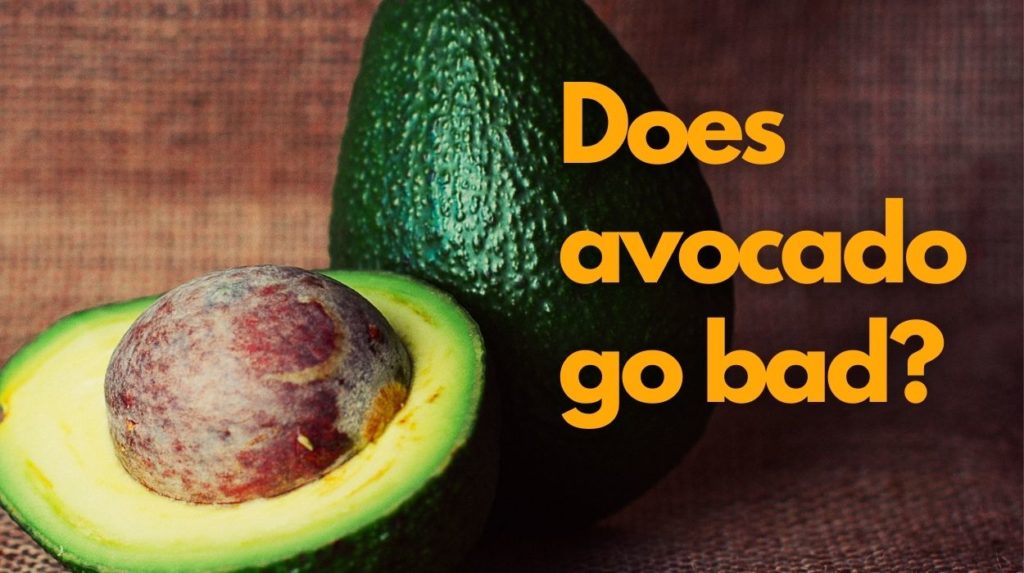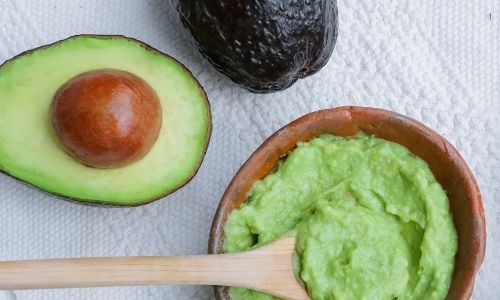
Avocado toasts are the next best thing when it comes to breakfast options or snacks. These food trends have gained such traction due to their delicious taste and health benefits. However, storing avocados can also come at a price.
Since avocados can go bad, it is necessary to store them properly to elongate their shelf life. But how should you store them? Do you need to undertake any special techniques?
All such questions shall be answered, along with many more, in the following article. So let us jump right into it!
How long do avocados last?

Avocados are almost frequently under-ripe when purchased from a store. This can be inconvenient because you won’t use them right away.
While some stores specialize in ripe avocados, you may have to hunt around the produce section to locate something similar to ready-to-eat.
While this means you’ll have to time your avocado purchases around when you want to use them, it also means you’ll have greater control over the fruit ripening process at home.
When you return back home from the store, leaving your avocados somewhere sturdy can be an option. You can also modify them to get ripe.
To ripen up the unripe avocados, storing them at a normal room temperature for 3 to 7 days is considered ideal. It can be refrigerated for an additional 3 to 5 days at best quality once it has ripened.
After that, the fruit will get overripe, and brown spots will appear, which will spread over time.
Avocados that have been chopped maintain their freshness for 3 to 4 days.
If you don’t add acid to the flesh, it will quickly become brown. Please keep that in mind while the brown flesh isn’t bad, it doesn’t look presentable in guacamole.
| Pantry | Fridge | |
| Ripe | 3-5 days | |
| Unripe | 2-7 days | |
| Cut | 2-4 days |
How to tell if avocados have gone bad?

Overly soft with dented skin:
According to research, gently squeezing the avocados with the help of your hand can help you determine if it’s still unripe or not. If you compress the fruit with your fingers, the flesh may bruise.
Even after squeezing when the avocado doesn’t give in, you can state that it is not ripe. When it gives in slightly, you can quote that it is ripe, and you can finally eat it.
If squeezing leaves a little indentation, it’s too ripe for slicing and should be mashed instead. If pressing the fruit leaves a significant dent and feels mushy, it is overripe and likely ruined.
If an avocado has a hollow spot or appears deflated before you squeeze it, it’s probably past its prime.
Blackness on skin:
Research states that as avocados ripen, their skin color varies dramatically, especially the Hass variety, which accounts for around 80% of all avocados consumed worldwide.
Hass avocados have rough, vivid green skin when not fully ripe. When fully ripe, it turns a dark green or brown color. Whenever an avocado turns mushy even with a slight touch, and when you can notice blackness on the skin, it has ripened way too much.
Like the zutano and Fuerte, other types keep their green skin color even when fully ripe. Use other methods to determine if they’ve gone bad, such as feeling for hardness.
Dark and stingy flesh:
It’s simpler to tell if an avocado has gone rotten once it’s been chopped. Well, this can only be done after you get your avocado home.
The flesh of an avocado that is ready to eat is bright green. Brown or black patches go through the flesh of a decaying one.
On the other hand, a solitary brown area could result from bruising rather than widespread deterioration and can be cut away. When you notice dark streaks after opening the avocado, you can state that the avocado has decayed.
At times this happens that avocados are plugged from trees that are not too old. Avocados black from such trees can have dark streaks on them, but they are not rotten. It’s fine to consume if the fruit looks excellent and doesn’t taste bad.
When an avocado has rotted, its texture might be stringy as well. It’s not necessarily terrible if there are no other indicators of decay. Growing factors can also contribute to a fibrous appearance.
Off flavor or odor:
When completely ripe, avocados have a wonderful, slightly sweet aroma and a nutty flavor. The fruit’s flavor and odor may become unpleasant as it ripens.
Research states that if it has a sour flavor or smell, bacteria have likely spoiled it and should be thrown away.
It could be rancid if it has a chemical odor and flavor. When bacteria attacks or the oxygen gets in contact with the fruit’s unsaturated fat, that is when it could go rancid.
The development of potentially hazardous chemicals can be caused by rancidity. If you suspect an avocado is rancid, don’t consume it.
Although the flavor of spoilt avocados varies, it’s typically easy to detect if they’re past their prime by tasting them. You can tell whether an avocado has gone bad by smelling it, tasting it, touching it, and looking at it.
Mold:
The appearance of mold on avocado has a grey or white color. Don’t sniff it if you’re allergic to mold because you can inhale mold spores, causing lung problems.
Avocados with mold on the outside should be avoided since they can infiltrate the meat and cause deterioration.
If you cut an avocado open and see mold, toss the whole thing out. Even if you notice mold in one spot, it can quickly spread due to the delicate flesh. Please do not attempt to save it.
What happens if you eat expired avocados?

Some individuals may experience more than mild nausea after eating a decomposing avocado. They may have nausea and dizziness in addition to frequent vomiting.
If this occurs, you should get medical help as quickly as possible to address the problem. After all, regular vomiting can cause dehydration, which can damage your health over time.
Aside from that, some molds can trigger severe allergic reactions in some individuals. The symptoms of nausea and vomiting aren’t the only ones to be worried about when this happens.
Some persons may experience breathing difficulties, necessitating emergency medical services.
According to research, overripe avocados can be eaten if they taste well; however, ruined avocados should be avoided.
The longer an avocado sits on the counter, the more probable it is to get sour or moldy, both of which can make you feel sick.
Can you freeze avocados?
-
Unripe avocados:
Unripe avocados should not be stored here since the defrosting process damages the fruit’s cell structure and prevents it from ripening properly.
-
Ripe avocados:
Place the avocado in the freezer for a few minutes. It’s ideal to use practically ripe avocados because defrosting will make them soft.
-
Half an avocado:
You can cut up an avocado in half by keeping its face down while freezing. However, mashed avocados freeze better.
-
Mashed avocados:
If you add some lemon or lime juice to the mashed fruit that has been spread generously in a tray or container, you will see that it does not brown much. It may be defrosted rapidly and evenly as a result of this.
What is the best way to store avocados?
Pantry:
-
Unripe:
There are some fruits that produce Ethylene, for example, a banana. Keeping them along with your unripe avocados can contribute to ripening them faster.
You can distinguish a ripe avocado from an unripe one if it has dark green skin on the outside. You have to be careful while pressing it. You should feel a slight press but should not see a dent on the surface.
-
Ripe:
Avocados should be stored in the fridge after they are mature to avoid becoming overripe.
-
Half an avocado:
After you cut the avocado, you can see that it decays faster than in a whole state. This is why it is recommended to store your avocados in a fridge.
-
Mashed avocado:
After mashing the avocado, you can see that its flesh is exposed. This is why you should either freeze it or refrigerate it.
Refrigerator:
-
Unripe:
It’s not a good idea to keep these in the fridge because the cooler temperatures will lead them to ripen much slower or never at all.
If you have an abundance of avocados, it’s better to let them ripen before storing them in the refrigerator or prepare and freeze them.
-
Ripe:
Refrigeration is the perfect way to store an avocado if you feel that it is ripe. This is because any additional ripening or deterioration is considerably delayed.
-
Half an avocado:
You can store the other half of an avocado in the fridge if you only need half of it. When storing half an avocado, remember to leave the seed inside to delay the decay.
-
Mashed avocado:
Be sure about adding lemon juice to the avocados because if you don’t, the chances are that they’ll go bad faster. When you add lemon juice to the avocados, the browning process slows down.
Fill a closed plastic jar halfway with it. While incorporating the mix, make sure that you don’t get any air bubbles in the way.
Then, on top of that, pour around half-inch of water and secure the lid to the container. When ready to use it, drain the water and stir it well.
Alternatives for Avocados if they Go Bad
In case you require avocados for any recipe, but the ones in your pantry are showing signs of spoilage, you can try the following substitutes:
- Butternut squash
- Silken tofu
- Pinto beans
- Greek yogurt
- Nut butter
Frequently Asked Questions (FAQs)-
How to know if mashed avocado is bad?
Cutting an avocado open is the most reliable way to determine if it has gone rotten. You can tell if the avocado has decayed by looking at the color of its flash. If it is either black or brown, you should throw it away.
When you squeeze the avocado, it should feel soft or mushy. Take this as a sign for determining if it has gone bad. If you remove the rotten area, you can use the other part of the flesh.
Is it healthy to eat an avocado a day?
Avocados are actually pretty beneficial for your health. Avocados are also abundant in monounsaturated fat, fiber, and potassium, all of which are linked to heart health.
Is it safe to eat brown avocado?
Brown avocado is the result of a chemical reaction. It occurs when the compounds react with oxygen and produce brown pigments, known as melanin. While this part may look unappetizing, it is completely safe to eat.
The bottom line
Avocados provide you with several health benefits. This is why you should make sure that you are storing them with utmost caution.
We are hoping that this article helped you with all your necessary concerns. Everything according to your needs is mentioned above.
We would love to know how you stored your avocados and which method you found the best. Let us know in the comment section below.



